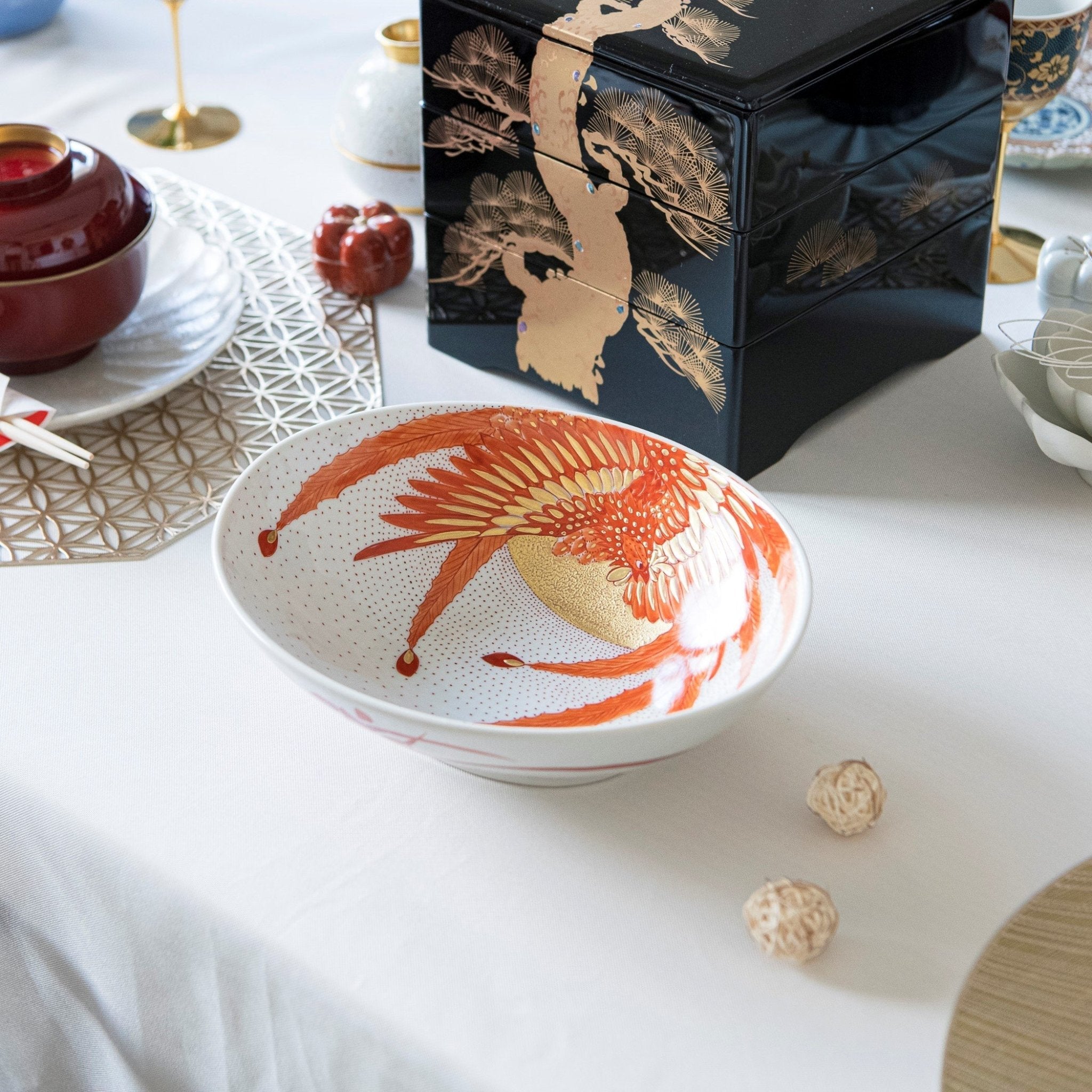












Akae Red Phoenix Kutani Oval Bowl
Estimated Shipping Widget will be displayed here!
Premium Kutani bowl with a drawing of a graceful phoenix in red and gold on a durable porcelain base. It is a piece made by Fukuda Yoshinori. Detailed figures drawn in red and added golden decorations are characteristic of this Iidaya and Akae style. The phoenix is famous as a symbol of immortality and it is said to bring love and happiness.
Fukuda Yoshinori, a designated Traditional Craftsman, has received numerous awards in prestigious art exhibitions and is highly esteemed both in Japan and internationally. He has mastered various traditional Kutani porcelain techniques, including Akae, Yoshidaya, and Ko-Kutani, demonstrating a broad and refined artistic skill set.
His designs are captivating, bringing to life breathtaking natural landscapes and dynamic living creatures in motion. With a delicate touch, he captures these subjects in the style of traditional Japanese paintings, skillfully applying Kutani colors over intricate bone-drawn sketches.
The size is suitable for serving appetizers, salad, and side dishes such as sunomono (vinegared food) and nimono (simmered food) for 2 to 4 person.
It is a perfect gift for your friends and family who love Japanese art and culture. This piece of art will bring your dining table an authentic Japanese atmosphere.
DETAILS
| Quantity | 1 |
| Size | L 21.5 cm (8.5 in) × W 25.5 cm (10 in) x H 7 cm (2.8 in) |
| Material | Porcelain |
| Microwave | No |
| Dishwasher | No |
Crafts
Kutani ware is a pottery produced in the Kaga region of Ishikawa Prefecture and it has a history of over 350 years. It is characterized by the heavy brilliance of the five colors of green, yellow, red, purple, and navy blue that are applied to the bold and daring lines. Its long history has evolved through the tireless efforts and enthusiasm of people who have sought innovation while maintaining tradition.
The beauty of the various styles and methods of painting is known as "Japan Kutani" and is highly regarded around the world.
Choose options













Estimated Shipping Widget will be displayed here!
Akae
Akae, or red painting, is an overglaze decoration that primarily uses red, complemented by colors such as green, purple and blue. In China, this style originated during the Song Dynasty (960 CE–1279 CE), while in Japan, it was introduced by Sakaida Kakiemon during the Shoho era (1644 CE–1648 CE) and later found its place in Kutani ware.
In Kutani porcelain, akae-saibyo is particularly famous. Akae-saibyo literally means "fine painting in red." Using an extremely fine brush, each line is drawn on the surface of the vessel with exquisite detail, creating breathtakingly intricate patterns.

Large Bowls
With their generous diameters, large Japanese bowls are capable of fulfilling a wide range of dining functions. Here, you'll find serving bowls for main dishes and sides, as well as salad bowls, pasta bowls, and more. Mix and match designs and styles to complement any aesthetic and round out your kitchen collection.
This category includes bowls with diameters over 21 cm (8.3 in).

Guide to Japanese Bowls

Interview with Nakaya Shinichi, Specialist of Kutani Ware - History Part 1



